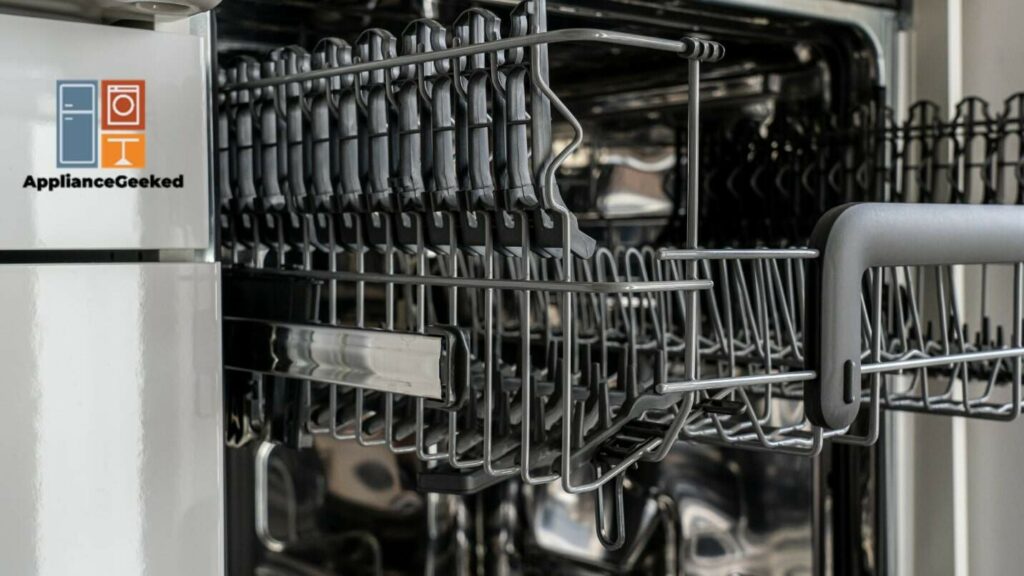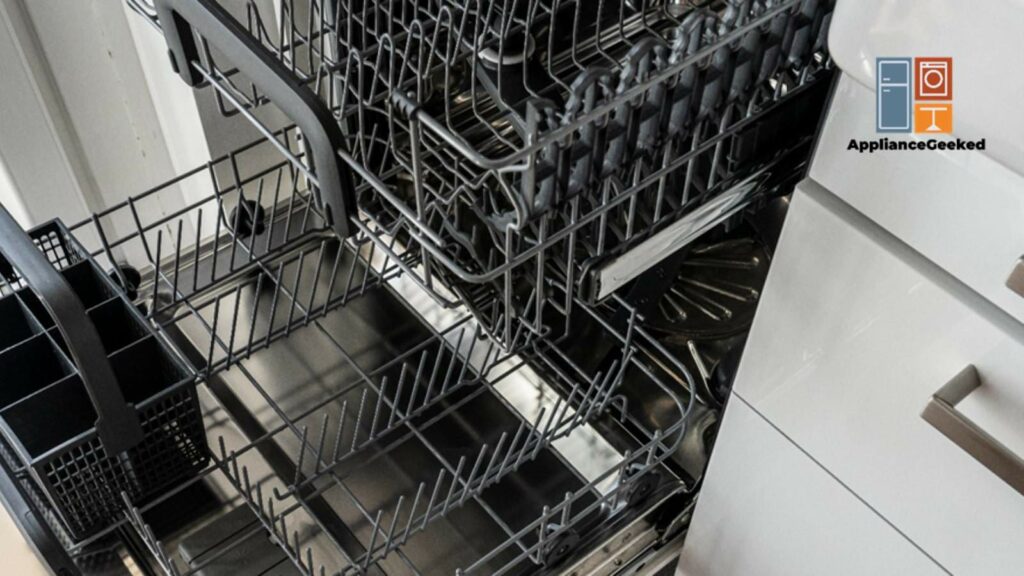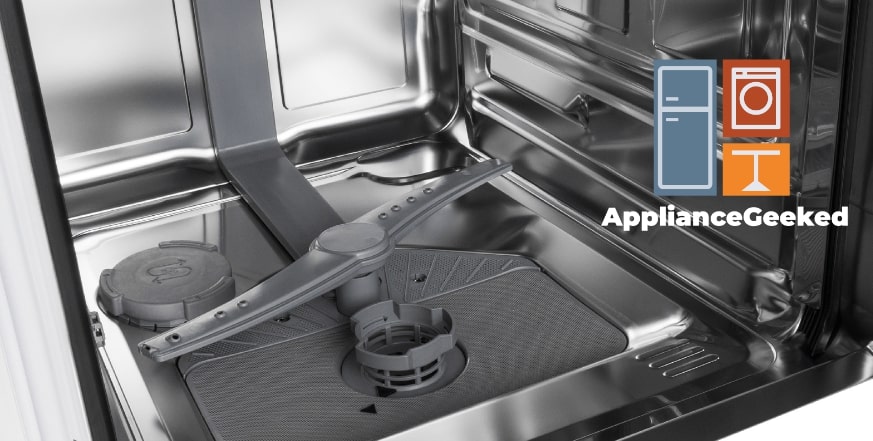While some models of Samsung dishwashers have a digital display, others use blinking lights to tell you that something is wrong.
So what does it mean when your normal light is blinking and what can you do to solve it? Let’s jump right in!
Why is the normal light of your Samsung dishwasher blinking?
A normal light flashing by itself means that the sensor has detected a leak or there isn’t enough water in your dishwasher.
If the normal light blinks along with other lights in the panel, this indicates a hot water error, stuck button error, or short-circuited thermistor.
First, try unplugging your dishwasher for one minute, plugging it back in, and then rebooting it.
If the error remains, you can do one of these things:
- Check for installation errors or damaged parts
- Clear the clogs that may be causing the leaks and water supply issues
- Replace the malfunctioning heating components
If you need more help in troubleshooting, keep reading.
How can you fix your dishwasher’s blinking normal light?
Now that we know why the normal light flashes, let’s enumerate the possible causes and solutions.
Normal Light Blinking Alone
When the normal light is flashing by itself, your dishwasher’s leak sensor has detected moisture.
Your machine will try to correct this and will turn itself on to drain the water away. However, unless the leak sensor has determined that the moisture is gone, it will not turn itself off.
You need to find the source of the leak or moisture to resolve this issue.
The most probable cause for your leak sensor going off is moisture coming from an outside source. This may be due to a wet floor, spilled drink, or residue from a previous flooding experience.
Cleaning the surrounding wet areas and waiting for your machine to dry out should resolve it. After a few minutes, unplug your dishwasher for one minute, then plug it back in and reboot it to correct the error.
On the other hand, if you’ve already noticed puddles of water close to your dishwasher, here are the prime causes you should check for:
- Damaged or loose water supply hose
- Loose drain hose
- Unleveled placement of the dishwasher
- Overextended tub due to tight screwing
- Clogged or torn drain filter
- Clogged or cracked dispenser
- Worn out gaskets
- Dysfunctional water pumps
- Clogged water nozzles
- Unremoved garbage disposal cap
- Pushed out rubber seals
If it’s a new dishwasher, damaged components are unlikely. In this case, look out for installation issues instead.
And if you still can’t find the cause of the leak, try running a test cycle and quickly find the source.
Once you find what you’re looking for, unplug your machine for safety.
Next, try clearing out the clogs or replacing the damaged parts to fix the problem. Also, check if everything is connected securely and if your dishwasher isn’t tilted.
Normal Light Blinking With Other Lights
The normal light button can also flash with other lights in the panel. In that case, the problem may be something else entirely.
Some of the lights that may blink together with the normal light are the following:
- Smart Auto Light
- Express 60 Light
- Delicate Light
- Quick+ Light
- Heavy Light
In a Samsung dishwasher, it is possible for 3 or more lights to flash along with the normal light. Depending on which light blinks with the normal light, this could indicate a:
- Stuck button error
- Dishwasher temperature error
- Water level error
- Water temperature error
- Thermistor issue
Since some of the combinations indicate the same issue, let’s break this down to the causes and their corresponding lights.
Stuck Button Error
You’ll know that this is your issue if you see the following lights flashing along with your normal light:
- Normal, Smart Auto, & Express 60 (in models with Express 60 only)
- Normal & Delicate
- Normal & Quick+
But what is it exactly?
A stuck button error is self-explanatory — it means that one of the buttons in the panel is stuck or unresponsive. This may be caused by a misalignment or dirt build-up in the gaps.
However, this error could also mean that a command was stuck and wasn’t carried out by your dishwasher. This can happen when you press too many buttons consecutively.
To resolve this, the first thing you want to try is to reboot your dishwasher. This can flush out any residual commands that are left in its system.
First, you’ll need to unplug the machine. Next, try pressing all the buttons on the panel and then plug it back in to reboot its system.
If this doesn’t work, you may have to clean the buttons on the panel before rebooting it again.
For this, an ammonia-based cleaner is best. It can break down any food, dust, or oil that may be clogging the buttons.
However, please be careful when using these types of cleaners and be sure to wear gloves and goggles.
Once you have cleaned it thoroughly, try unplugging and plugging it back on again.
If this doesn’t work and your lights are still blinking, you may need a pair of expert eyes to take a look at your Samsung dishwasher.
Dishwasher Temperature Error
If your dishwasher is getting hotter than it normally does, you’ll get the combination of flashes from the following lights:
- Normal and Auto/Smart Auto
- Normal and Quick
Your Samsung dishwasher has an internal heater to get the water inside warm enough to clean or dry your dishes.
However, it’s possible for the internal heater to go past the limit, hence the error.
To fix this, simply empty your dishwasher, add a new detergent, and run your usual cycle.
If this doesn’t resolve the issue, call the Samsung Support Center for more guidance.
Water Level Error
This error means that your dishwasher does not have enough water to function properly. You’ll know that this is the case when the following lights flicker:
- Normal, Heavy, & Quick
- Normal, Heavy, & Smart Auto
Since the error has something to do with the water supply, you should check the components responsible for it — the water inlet valve and hose.
One of the common issues is that the inlet hose and inlet valve is damaged or clogged. Try looking for anything that may have blocked the water from flowing freely to your dishwasher.
If the problem isn’t caused by clogging, then it may simply be because the water pressure is low. Make sure the water supply to the dishwasher is fine and there are no leaks in it.
If that doesn’t fix the problem, try emptying the appliance, adding detergent, then running a normal cycle.
If these steps don’t work, it’s time to call the experts.
Water Temperature Error
This means the water’s too hot and is indicated by these lights:
- Normal, Delicate, & Quick
- Normal, Smart Auto, & Quick+
- Normal, Smart Auto, & Delicate
Since your Samsung dishwasher is capable of heating the water all by itself, sending already-hot water into your machine isn’t necessary.
If your dishwasher is connected to a hot water supply, make sure that the temperature isn’t set above 176°F (80°C). In fact, it would be better to connect your dishwasher to a cold water supply instead.
If you have verified that the temperature is within the threshold but the lights are still blinking, call the experts for help or have them take over the troubleshooting.
Thermistor Issue
The thermistor is responsible for regulating the temperature of the water when you choose a cycle in your dishwasher.
You’ll know that your thermistor is having problems when you see the combination of lights coming from the following:
- Normal, Heavy, & Express 60
- Normal & Heavy
When a thermistor fails, it may show you incorrect temperature readings or cause sudden fluctuations in the temperature.
If it has short-circuited or has been damaged due to mishandling, extreme heat, or wearing down, DIYing it is not the best idea. Have it fixed or replaced by a professional.
Hopefully, this guide has brought you closer to understanding why your normal light is blinking. Just remember to follow the troubleshooting steps correctly and always exercise caution when fixing your appliance.
And if you need a little more help handling the tools, you can always contact an appliance repair expert close to you or request Samsung’s support services.




